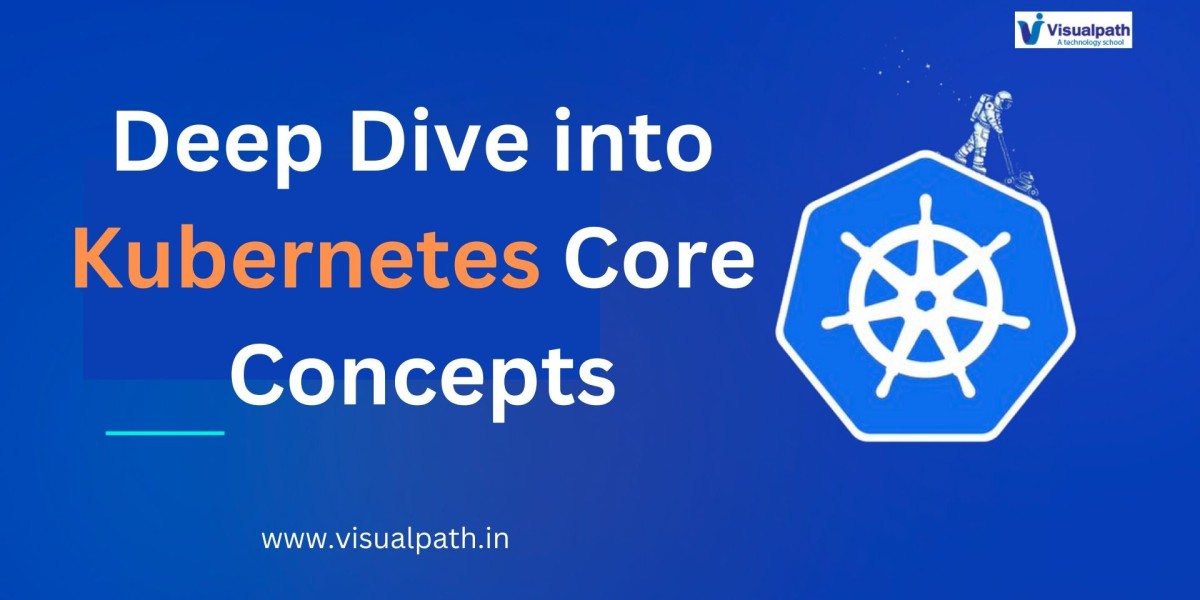Deep Dive into Kubernetes Core Concepts
Introduction:
Kubernetes has rapidly become the go-to platform for managing containerized applications, providing a robust framework for automating the deployment, scaling, and management of these applications. Originally developed by Google and now maintained by the Cloud Native Computing Foundation (CNCF), Kubernetes offers powerful features that make it easier to manage complex systems. Docker and Kubernetes Training
Kubernetes Clusters:
At the heart of Kubernetes is the concept of a cluster. A Kubernetes cluster is a collection of physical or virtual machines that work together to run containerized applications. These machines, also called nodes, can be spread across on-premise data centers or in the cloud.
Kubernetes cluster consists of two main components:
Control Plane: This is the brain of the Kubernetes cluster, responsible for managing and maintaining the desired state of the system. It consists of components like the API server, controller manager, and etcd (the distributed key-value store).
Worker Nodes: These are the machines where the actual applications (in the form of containers) run. Worker nodes have the necessary tools to run and manage the containers and report back to the control plane.
The control plane and worker nodes form the infrastructure where Kubernetes can run applications in a resilient, scalable manner. Kubernetes Online Training
Nodes:
A node in Kubernetes is a machine (virtual or physical) that performs the work assigned by the control plane. Each node contains the necessary components to run and manage containers, including the container runtime (e.g., Docker), kubelet (the agent that communicates with the control plane), and kube-proxy (which manages network communication).
Nodes are responsible for the lifecycle of the containers they host. Kubernetes can automatically assign containers to nodes based on resource availability and predefined policies. If a node fails, the Kubernetes system detects this and reschedules the containers to other healthy nodes, ensuring high availability and resilience.
Pods:
The pod is the smallest and most basic deployable unit in Kubernetes. A pod represents one or more tightly coupled containers that share the same network namespace and storage volumes. Although multiple containers can be deployed in a single pod, it is a common practice to have a one-to-one relationship between pods and containers. Pods are typically used to run a single instance of an application or a microservice. Docker Online Training
Pods are ephemeral by design, meaning they are not permanent. If a pod dies (due to failure or scaling), Kubernetes automatically replaces it with a new instance. This helps ensure that the application remains up and running with minimal disruption.
Services:
While pods are the primary units of deployment, they are transient, which means their IP addresses can change. This creates a challenge in terms of networking and service discovery. Kubernetes solves this problem through services, which provide a stable endpoint to access a group of pods, even as the individual pods behind the service come and go.
A service in Kubernetes acts as a load balancer, distributing traffic to the correct pods. This abstraction enables reliable communication between different parts of an application, regardless of changes in the underlying pods. Services can expose applications to external clients or facilitate internal communication between different microservices within the cluster.
Additional Concepts:
While the above components are central to Kubernetes, there are several additional concepts worth mentioning, such as volumes, which handle persistent storage for pods, and configMaps and secrets, which help manage application configuration and sensitive data securely.
Conclusion:
Kubernetes' architecture, built around clusters, nodes, pods, and services, provides a powerful platform for orchestrating containerized applications. Each component works together to ensure that applications run efficiently, are scalable, and remain resilient.
Visualpath is the Leading and Best Institute for learning Docker and Kubernetes Online in Ameerpet, Hyderabad. We provide Docker Online Training Course, you will get the best course at an affordable cost.
Attend Free Demo
Call on - +91-9989971070.
Visit : https://www.visualpath.in/DevOps-docker-kubernetes-training.html
WhatsApp : https://www.whatsapp.com/catalog/919989971070/
Visit Blog : https://visualpathblogs.com/










